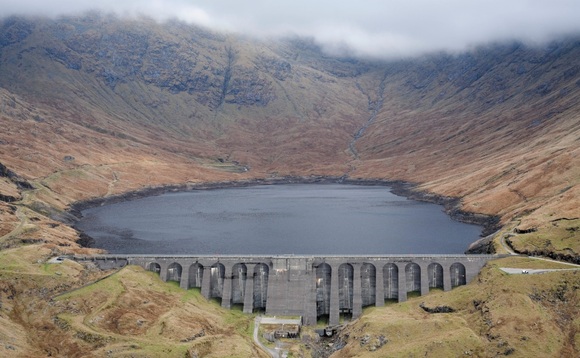In pumped storage hydro systems water is pumped up from a lower reservoir to a higher one when electricity supply exceeds demand, and then allowed to flow down again when demand exceeds supply, driving a turbine en route, and so producing electricity exactly when it is needed. It works like a giant battery as a way of storing energy. The beauty of such systems is the speed with which they can respond to changing demand, ramping up from standstill in a couple of minutes or from spinning reserve in seconds. Britain currently has four such systems, mainly built in the 1960 and 1970’s as a way of helping the massive and inflexible coal and nuclear baseload plants of that era match the fluctuating patterns of supply and demand. Britain’s biggest is Dinorwig in Snowdonia, with a capacity of 1,738 MW.
In the 1980’s more flexible gas power stations were built and the need for pumped storage declined somewhat, so none were built over the last 30 years. Now as more and more wind and solar come onto the grid additional pumped storage schemes are being planned.
In Scotland SSE would like to build several such systems, given the right financial confidence that their investment would be a sound one. A lack of clear government policy has been a problem. Lord Adonis and the National Infrastructure Commission have just issued a report that calls for more ‘interconnection, storage and demand flexibility’. I couldn’t agree more. Lots of other storage technologies will also have a role to play, from compressed air to batteries, super capacitors to flywheels and additional pumped storage should certainly be on the shopping list.
Currently the focus is on whether to expand the Cruachan Pumped Storage Hydro Power Station above Loch Awe near Oban in Scotland, from 440 MW to 1,040 MW. To me this seems like a worthwhile and useful project and I hope Lord Adonis thinks so too!
References:- Cruachan expansion plans here and here The advantages of a range of storage technologies here and here

